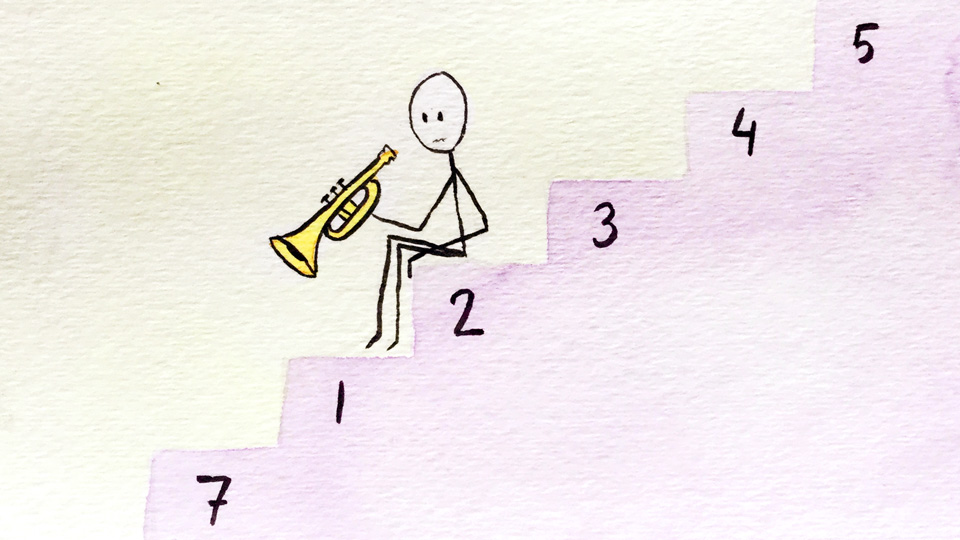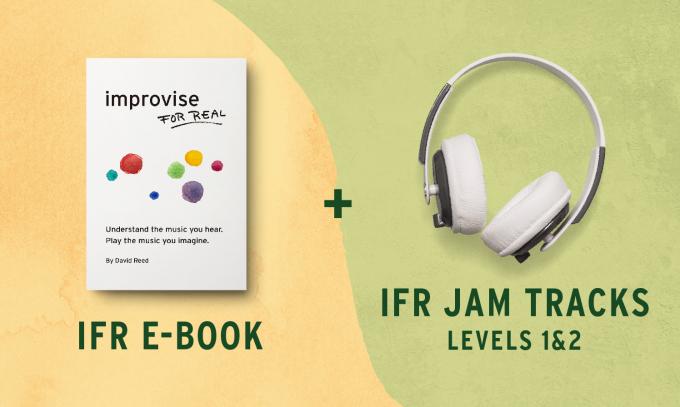Hi David,
I have a problem with Exercise 2: Melody on trumpet. When you say (for example) to start on Bb as note 2 and play the resulting scale, I find it difficult to play this scale.
I am so used to playing all major scales starting on note 1 that this very difficult as I can't seem to identify which are the whole tones and which are half tones. I can sight read most things, but starting on anything other than note 1 is problematic. Please help.
Kind regards,
Michael
David's response:
Hi Michael,
You just need to go more slowly. The exercise is to calmly visualize where you are on the tonal map and then think through each movement that you want to make. I think you are getting frustrated because you are imagining a different kind of exercise like a technical scale study that you would practice with some speed. But this exercise is just the opposite. It's about taking the time to clearly see where you are.
If you go through the thought process slowly, then you shouldn't have any difficulty at all. For example let's think through the first few steps together:
- Can you play any random note on your trumpet? (yes)
- Can you imagine this to be note 2 of the major scale? (yes)
- Can you picture the tonal map and see the whole step between notes 2 and 3? (yes)
- Can you move up a whole step on your trumpet? (yes)
- Can you now just relax a moment and imagine that you are on note 3? (yes)
That's all there is to it. The exercise is just to calmly think through each movement in this way. And every step of the way, you can take time to enjoy improvising with the notes that you have already clarified.
We're in no rush. Take all the time you need. At some point you'll complete the octave and you'll have all of the notes of the scale, and you can enjoy improvising for a good long while with the sounds of the second harmonic environment.
This is the exercise. Nobody's asking you to build the second harmonic environment at lightning speed all over your trumpet with the same ease with which you can play the scales you have practiced for years. I'm just asking you to do two things:
1) Calmly build the harmonic environment from scratch, thinking through each new movement in a very relaxed way.
2) With each new note that you add, take time to really enjoy improvising with those sounds.
What you'll find is that if you just slow down and give this approach a chance, very quickly you will start to recover some of that agility that you enjoy when you are playing scales starting on note 1. But your agility will be much more powerful because it will be based on a deep understanding of the entire harmonic landscape, versus just having certain fingerings very well rehearsed and memorized.
Please give this a try and let me know how you make out. I'll be glad to talk about it further if you're still getting stuck.
Happy practicing Michael!
David

